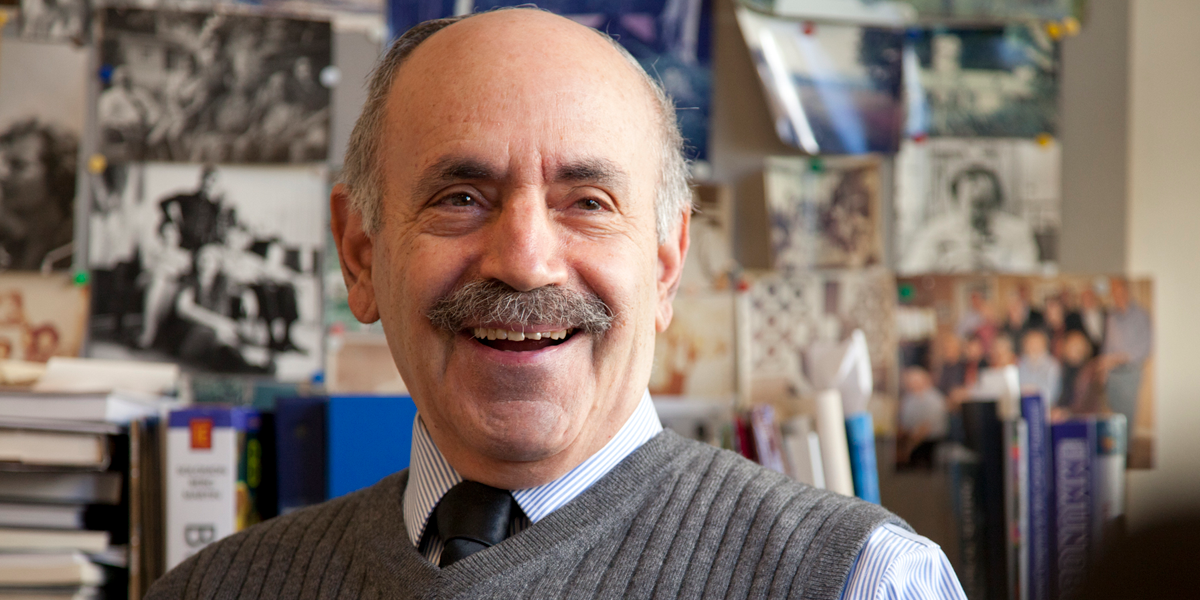Targeting the seeds of metastases
A better understanding of cancer stem cells opens the door to designing more effective therapies.
A tumor is a constantly changing thing.
Within its constituent cells, DNA shatters and mutations accumulate. The cells themselves shift shape and change state—migrating or staying put, resisting cancer treatment or succumbing to it.
Robert Weinberg has long investigated how such transformations occur. Director of Ludwig MIT, Weinberg was one the first researchers to identify key genes—tumor suppressors and activators—that control cancer development.
Lately, one peculiar but powerful type of cellular shape-shifting has captured his interest. Five years ago, he and his colleagues showed how less aggressive breast cancer cells can morph into cancer stem cells that can spawn new tumors, including metastases.
“This area of study has profound implications for translational medicine and the treatment of tumors,” says Weinberg.
Plastic cancer cells
Until recently, researchers presumed that cancer stem cells operate unidirectionally—that these quiet, slow-growing cells give rise to the more rapidly growing cells that make up the bulk of a tumor. But recent studies have challenged that notion, showing that in some tumor types the opposite can occur: non-stem cells can become cancer stem cells.
Weinberg and his colleagues took a close look at this reverse conversion in breast cancer. They found that the process is driven by a gene called ZEB1, and that it occurs most often in more lethal types of breast cancer. In the cells of such tumors, the ZEB1 gene is poised to be activated by a simple molecular nudge—such as exposure to TGF-β, a molecule often present in tumors. “If you treat non-stem cells with TGF-β, then ZEB1 springs into action,” explains Weinberg. More benign breast cancer cells, in contrast, fail to respond to TGF-β by activating ZEB1 expression, entering into a cancer stem cell state and becoming aggressive.
Weinberg thinks that the mechanism may account for the aggressiveness of some tumor types, notably breast cancers. He proposes that before primary tumor cells migrate to new locations in the body, they can switch on ZEB1 and turn into cancer stem cells that seed metastatic tumors.
Hitting the stem cell
Several research groups are developing experimental drugs to specifically target stem cells. Weinberg is working on such agents with Verastem, a biotechnology company he cofounded, testing agents that kill cancer stem cells or disable them by prompting them to turn into non-stem cells.
The new findings suggest that researchers have to go one step further to kill aggressive tumors: they also need to target non-stem cells that can change into cancer stem cells, or prevent their formation. Weinberg is hopeful that in the next few years his laboratory will generate experimental agents that can do these things.
Research such as this may one day lead to treatments that block metastasis and enable durable control of cancer, says Weinberg. “Patients rarely die from their primary tumors. They almost always die from their metastatic tumors.”
That reasoning has driven Weinberg to make the study of metastasis the central focus of Ludwig MIT. His own group is now building on the ZEB1 study to investigate whether a similar mechanism generates stem cells in other tumor types and to uncover other processes that propel metastases.
REFERENCE
Chaffer CL, Marjanovic ND, Lee T, Bell G, Kleer CG, Reinhardt F, D’Alessio AC, Young RA, Weinberg RA. Poised chromatin at the ZEB1 promoter enables breast cancer cell plasticity and enhances tumorigenicity. Cell. 2013 Jul 3;154(1):61-74. PMID: 23827675
